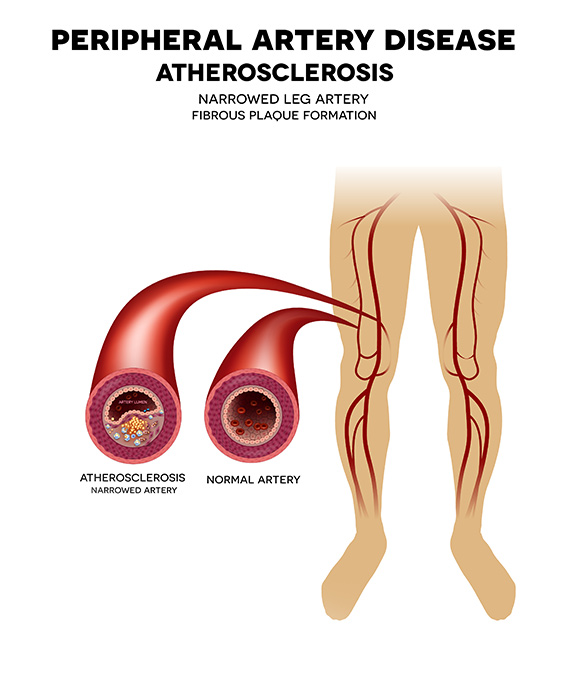There are more than 130,000 amputations per year in the United States, and many of those are performed on patients with arterial disease.
Peripheral arterial disease (PAD), also called peripheral vascular disease, is the blockage of arteries going to an extremity or limb. The most common blockage is to the lower extremities, meaning the legs and feet.
PAD affects 12-20% of Americans age 65 and older, and more than 17 million Americans have PAD. Many people with PAD are not being treated, because symptoms are sometimes not present.
If PAD is not treated, the disease can progress to critical limb ischemia (CLI). About a quarter of patients with CLI will receive amputation.
 How Do I Know If I Have Peripheral Arterial Disease?
How Do I Know If I Have Peripheral Arterial Disease?
Often, a patient will need feel any recognizable symptoms. Especially if a patient doesn’t exercise often, and therefore doesn’t require a lot of blood flow to the legs, they might not feel anything wrong. In some cases, they’ll see a doctor, who can recognize the problem because their is no pulse in the affected area.
Poor or decreased circulation in the legs is a common problem. Obviously, most people won’t need an amputation. Those with peripheral arterial disease who do have symptoms will often feel a pain in their calves or legs when walking.
In severe cases, where a patient has poor circulation to the lower extremities and severe peripheral arterial disease, the patient can have a lot of pain in their foot. There may even be ulcers or gangrene of the foot.
The best treatment often depends on the location of the disease. If there is blockage near the aorta versus blockage in the lower extremities, treatment varies. Some can be treated with angioplasty and stenting, or bypass procedures might be used.
Avoiding Amputation
Those with PAD should consult with their vein care specialist about lifestyle changes, and prescription medication options. Less invasive options will be attempted before amputation is considered.
Lack of routine physical exercise is a big reason for vascular issues, including issues that can lead to the need for amputation. Those already suffering from PAD may benefit from a variety of minimally invasive procedures that can improve circulation, such as atherectomy.
What About Diabetics?
An important distinction for diabetes patients is that they can have affected nerves. A diabetic person may have poor circulation, but also may not have sensation in their foot. This means they aren’t getting feedback they can feel, and can fail to recognize problems.
Diabetics should receive regular checkups with a vein care doctor, to ensure no problems are developing. If you are experiencing leg pain regularly, go see a doctor as soon as possible.
